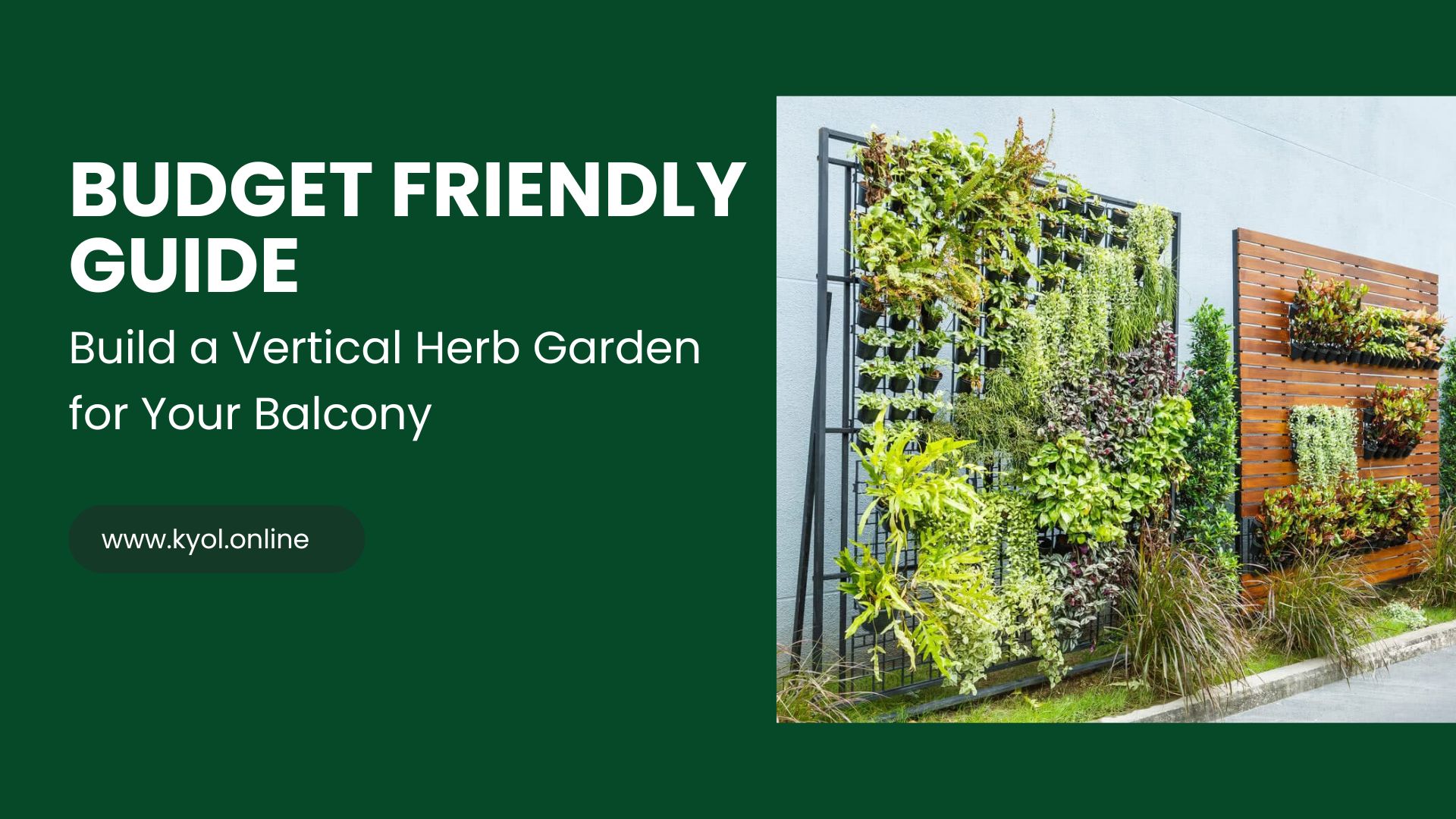Are you craving fresh herbs but limited on space? A vertical herb garden is the perfect solution for balcony owners who want to enjoy homegrown flavors without the need for a big backyard. Whether you are a beginner or a green thumb this guide will walk you through the steps to build and maintain your own vertical herb garden boosting your cooking and your living space.
Why Choose a Vertical Herb Garden for Your Balcony?
Balconies often do not offer much room but that does not mean you cannot grow your favorite herbs. Vertical gardening lets you maximize space by growing plants upward rather than outward. Here are some benefits:
- Space efficient: Ideal for small balconies or apartments.
- Aesthetic appeal: Adds greenery and charm to your outdoor space.
- Fresh herbs on demand: From basil to mint pick herbs fresh when cooking.
- Eco friendly: Promotes sustainability and reduces trips to the store.
Step 1: Choose the Right Location
Before building your vertical herb garden assess your balconys environment:
- Sunlight: Most herbs need 4-6 hours of direct sunlight daily. Place your garden where it gets adequate light.
- Wind: Strong winds can damage plants. Consider wind protection or position the garden near a wall.
- Accessibility: Make sure you can easily water and harvest your herbs.
Step 2: Select Your Vertical Garden Structure
There are several options to build your vertical herb garden:
- Wall mounted planters: Attach pockets or pots directly to a wall or railing.
- Hanging pockets or shoe organizers: Fabric pockets that hang vertically.
- Pallet gardens: Wooden pallets repurposed into plant holders.
- Tiered shelves or plant stands: Multiple levels for pots stacked vertically.
- DIY options: Use repurposed materials like PVC pipes or gutters.
Choose a structure that suits your balconys style size and your budget.
Step 3: Pick Your Herbs
Choose herbs that grow well in containers and suit your cooking style. Some popular and easy to grow herbs for balconies include:
- Basil Perfect for Italian dishes and pesto.
- Mint Great for teas and desserts.
- Parsley Adds freshness to salads and soups.
- Thyme A versatile herb for many cuisines.
- Cilantro Essential for Mexican and Asian cooking.
- Chives Mild onion flavor for garnishing.
Step 4: Prepare Soil and Containers
Use high quality potting soil designed for container gardening. Avoid garden soil as it can compact and limit drainage.
- Soil mix: Choose well-draining soil rich in organic matter.
- Containers: Ensure containers or pockets have drainage holes to prevent waterlogging.
- Fertilizer: Use slow release organic fertilizers to nourish your herbs.
Step 5: Planting Your Vertical Herb Garden
- Plant spacing: Follow guidelines on seed packets or plant labels for spacing.
- Watering: Water immediately after planting to help roots settle.
- Arrangement: Place herbs with similar sunlight and water needs together.
Step 6: Care and Maintenance Tips
- Watering: Most herbs like moist but not soggy soil. Water when the top inch feels dry.
- Pruning: Regularly trim herbs to encourage bushier growth and prevent flowering.
- Pests: Watch for aphids, spider mites or fungal issues. Use organic pest control methods like neem oil.
- Harvesting: Pick herbs frequently to promote new growth. Morning harvests usually yield the best flavor.
Step 7: Troubleshooting Common Issues
- Yellow leaves: Often a sign of overwatering or poor drainage.
- Leggy plants: Insufficient sunlight can cause weak growth.
- Wilting: Could be underwatering or root damage.
Bonus Tips for Success
- Rotate your vertical garden occasionally for even sunlight.
- Use mulch on soil surfaces to retain moisture.
- Try companion planting some herbs grow better together.
- Label your herbs to keep track of whats planted where.
FAQs
Q1: How often should I water my balcony herb garden?
Generally water when the top inch of soil feels dry. This might be daily in summer or every few days in cooler months.
Q2: Can I grow herbs indoors on my balcony?
Yes Many herbs adapt well to indoor or balcony conditions if given enough light.
Q3: Are vertical gardens expensive to set up?
You can create budget-friendly vertical gardens using recycled materials or inexpensive planters.
Conclusion
Building a vertical herb garden on your balcony is a rewarding and practical way to bring nature closer to your daily life. With the right setup and care you will enjoy fresh flavorful herbs all year round no backyard needed. Start small experiment and watch your green space flourish.
